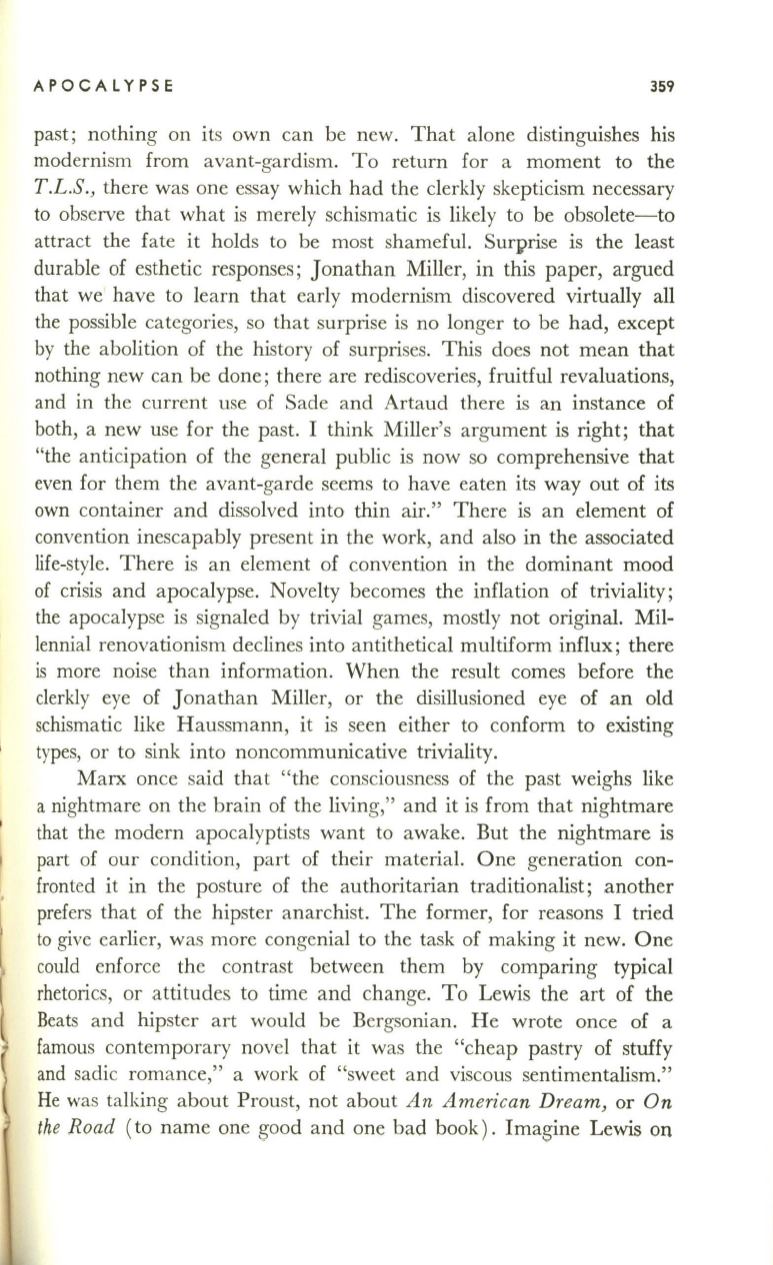
APOCALYPSE
359
past; nothing on its own can be new. That alone distinguishes his
modernism from avant-gardism. To return for a moment to the
T.L.S.,
there was one essay which had the clerkly skepticism necessary
to observe that what is merely schismatic is likely to be obsolete-to
attract the fate it holds to be most shameful. Surprise is the least
durable of esthetic responses; Jonathan Miller, in this paper, argued
that we have to learn that early modernism discovered virtually all
the possible categories, so that surprise is no longer to be had, except
by the abolition of the history of surprises. This does not mean that
nothing new can be done; there are rediscoveries, fruitful revaluations,
and in the current use of Sade and Artaud there is an instance of
both, a new use for the past. I think Miller's argument is right; that
"the anticipation of the general public is now so comprehensive that
even for them the avant-garde seems to have eaten its way out of its
own container and dissolved into thin
air."
There is an element of
convention inescapably present in the work, and also in the associated
life-style. There is an element of convention in the dominant mood
of crisis and apocalypse. Novelty becomes the inflation of triviality;
the apocalypse is signaled by trivial games, mostly not original. Mil–
lennial renovationism declines into antithetical multiform influx; there
is
more noise than information. When the result comes before the
clerkly eye of Jonathan Miller, or the disillusioned eye of an old
schismatic like Haussmann, it is seen either to conform to existing
types, or to sink into noncommunicative triviality.
Marx once said that "the consciousness of the past weighs like
a nightmare on the brain of the living," and it is from that nightmare
that the modern apocalyptists want to awake. But the nightmare is
part of our condition, part of their material. One generation con–
fronted it in the posture of the authoritarian traditionalist; another
prefers that of the hipster anarchist. The former, for reasons I tried
to give earlier, was more congenial to the task of making it new. One
could enforce the contrast between them by comparing typical
rhetorics, or attitudes to time and change. To Lewis the art of the
Beats and hipster art would be Bergsonian. He wrote once of a
famous contemporary novel that it was the "cheap pastry of stuffy
and sadic romance," a work of "sweet and viscous sentimentalism."
He was talking about Proust, not about
An American Dream,
or
On
the Road
(to name one good and one bad book). Imagine Lewis on


